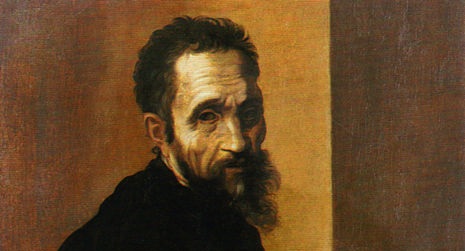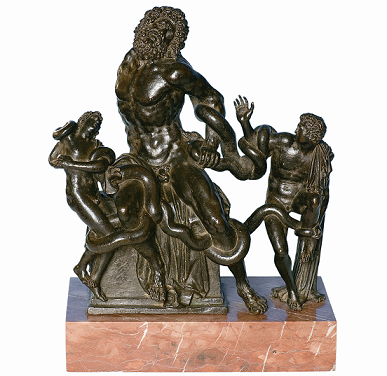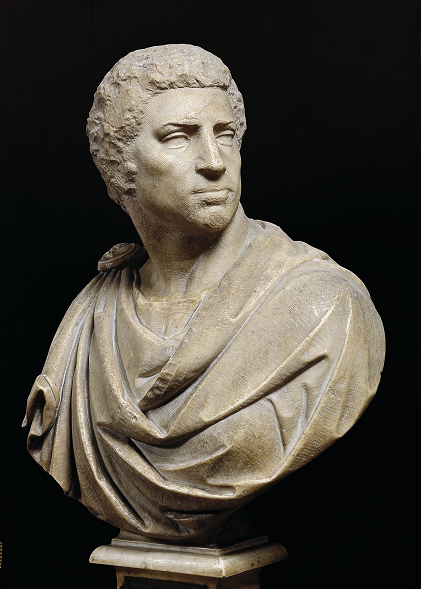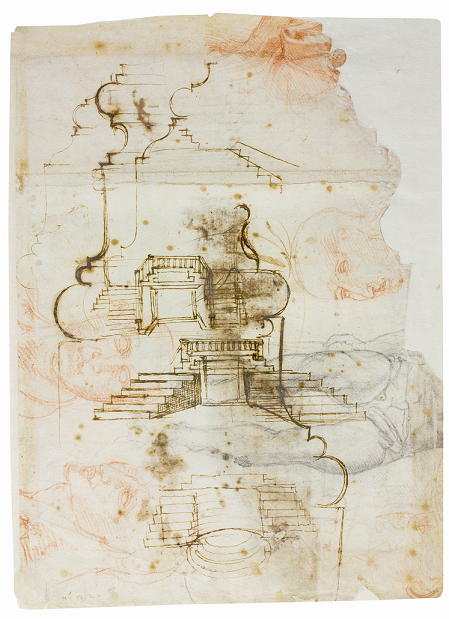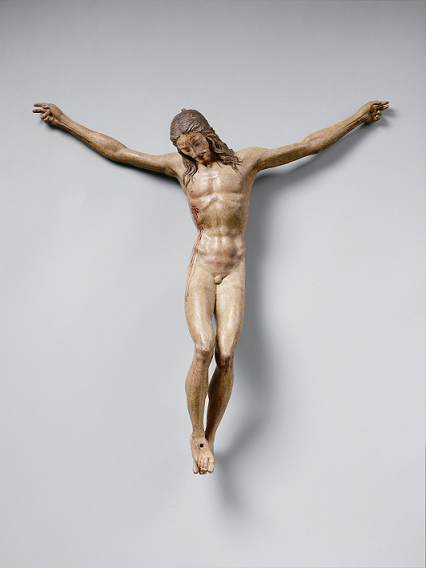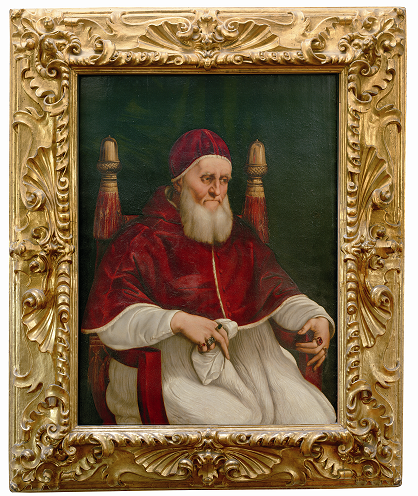Musei Capitolini, Rome, 27 May – 14 September 2014
The exhibition Michelangelo. Incontrare un artista universale, covering the life and work of this colossus for all times, is to be held at the Musei Capitolini on the occasion of the 450th anniversary of the death of Michelangelo Buonarroti in Rome on 18 February 1564. In the heart of the city, in that very Piazza del Campidoglio which the genius of Michelangelo made unique in the world, over one hundred and fifty works, of which around seventy by the Tuscan artist, from many of the leading cultural institutions in Italy and elsewhere, are to commemorate the 450th anniversary of the death of an artist who was so magnificent as to have a lasting influence not only on the arts in Italy but also on all universally known culture. An exhibition which overcomes the objective impossibility of exhibiting “non-transportable” Michelangelo masterpieces (a prime example being the frescoes in the Sistine chapel) by showing works which can be admired together. These works are in fact displayed, in many cases for the first time, facing each other and side by side in an extraordinary compendium of matchless artistic output, from painting to sculpture and from poetry to architecture, the four genres adopted by Michelangelo, which are to be linked up in nine display sections to focus in this way on the crucial themes of his art. One major example is the extraordinary presence in the exhibition of the great work of art by Michelangelo in a political vein, Brut, on view alongside earlier classical busts, the bronze Brut from the Musei Capitolini and the Caracalla from the Vatican museum, at last on display in a direct comparison with two works which, in different ways and circumstances, were its inspiration.
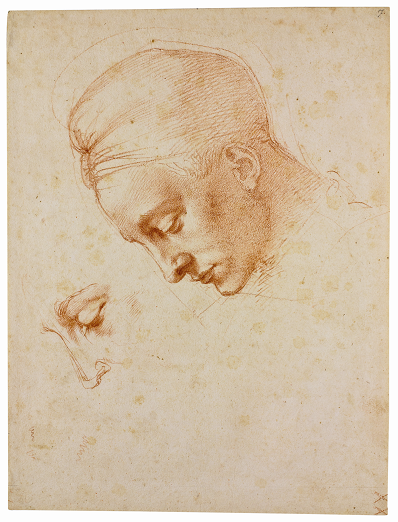 The exhibition is under the Patronage of the President of the Republic of Italy and is organized by Rome city council, Roma Capitale, culture, creativity and artistic promotion department – Rome heritage superintendence; Italian heritage, culture and tourism ministry; Lazio regional authorities and ARCUS. It is devised and curated by Cristina Acidini, curator for the historical, artistic and ethnoanthropological heritage and for the museums of the city of Florence, with the art historians Elena Capretti and Sergio Risaliti. Produced and organized by the Associazione culturale MetaMorfosi and by Zètema Progetto Cultura, with assistance from a high-profile specialist committee whose members, in addition to the curators, are: Riccardo Bruscagli, Alessandro Cecchi, Anna Imponente, Antonio Paolucci, Claudio Parisi Presicce, Daniela Porro, Pina Ragionieri, Pietro Ruschi, Claudio Strinati and Pietro Zander.
The exhibition is under the Patronage of the President of the Republic of Italy and is organized by Rome city council, Roma Capitale, culture, creativity and artistic promotion department – Rome heritage superintendence; Italian heritage, culture and tourism ministry; Lazio regional authorities and ARCUS. It is devised and curated by Cristina Acidini, curator for the historical, artistic and ethnoanthropological heritage and for the museums of the city of Florence, with the art historians Elena Capretti and Sergio Risaliti. Produced and organized by the Associazione culturale MetaMorfosi and by Zètema Progetto Cultura, with assistance from a high-profile specialist committee whose members, in addition to the curators, are: Riccardo Bruscagli, Alessandro Cecchi, Anna Imponente, Antonio Paolucci, Claudio Parisi Presicce, Daniela Porro, Pina Ragionieri, Pietro Ruschi, Claudio Strinati and Pietro Zander.
The fil rouge guiding visitors to the exhibition is market by a series of thematic “opposites” used to highlight the difficulties of the man and of the artist in the devising and creating of his works: ancient and modern, life and death, the battle, the victory and imprisonment, rules and freedom, earthly and spiritual love. The contrast of earthly and spiritual love, for example, was particularly felt by Michelangelo, both in art and in life. This is demonstrated by a set of drawings and other works inspired by close friendships and elective affinities such as those for Tommaso Cavalieri and Vittoria Colonna. Each theme, as if mirrored, is to be analyzed by comparing drawings, paintings, sculpture and architectural models, as well as a highly select choice of signed writings, i.e. letters and poetry, via Michelangelo’s full personal and artistic career.
The perfection of the Madonna della Scala, a masterpiece by the fifteen-year-old Michelangelo, will greet visitors to the Musei Capitolini, introducing them to a display of the jewelry from the collection of Casa Buonarroti. The latter has brought to Rome the Studio per la testa di Leda, one of the artist’s finest drawings, the impressive model in wood of the San Lorenzo façade, never built, in Florence and some of the most significant signed sonnets. Thanks to efforts by Roma Capitale, Mibact and many cultural organizations, it is finally possible to compare the now famous wooden crucifixes attributed to Michelangelo, while the statue of the Risen Christ from Bassano Romano can be compared to the later one of the Basilica di Santa Maria Sopra Minerva, a few yards from the Campidoglio. Also on display are the Fall of Phaeton from the Accademia in Venice and the Study of the Head of the Cumaean Sibyl from the Biblioteca Reale of Turin. Important works have also come from the Uffizi in Florence and the Vatican museum. Some of the finest drawings ever produced by Michelangelo are also on special loan from the collection of the British Museum in London.
It is thanks in fact to the presence of a large number of outstanding sketches and preparatory drawings which underline the creativity of Michelangelo, the birth of the idea, subsequent development and final creation of the work in its completeness, that the exhibition offers an opportunity for a closer look at the beginning of the creative process, essential and decisive for indepth study of the brilliant inspiration behind the Sistine Chapel and the Last Judgement.


